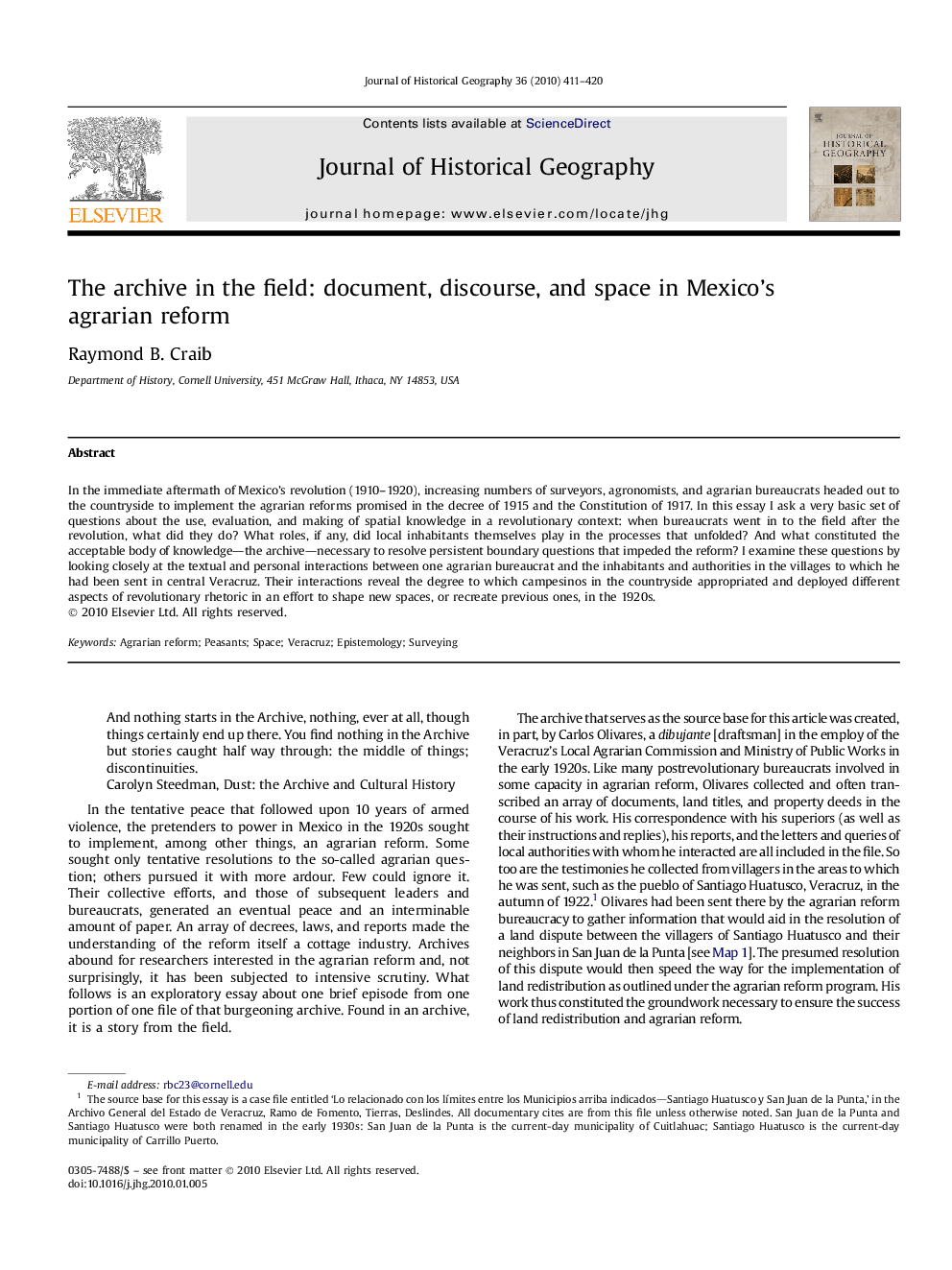| Article ID | Journal | Published Year | Pages | File Type |
|---|---|---|---|---|
| 1039164 | Journal of Historical Geography | 2010 | 10 Pages |
In the immediate aftermath of Mexico's revolution (1910–1920), increasing numbers of surveyors, agronomists, and agrarian bureaucrats headed out to the countryside to implement the agrarian reforms promised in the decree of 1915 and the Constitution of 1917. In this essay I ask a very basic set of questions about the use, evaluation, and making of spatial knowledge in a revolutionary context: when bureaucrats went in to the field after the revolution, what did they do? What roles, if any, did local inhabitants themselves play in the processes that unfolded? And what constituted the acceptable body of knowledge—the archive—necessary to resolve persistent boundary questions that impeded the reform? I examine these questions by looking closely at the textual and personal interactions between one agrarian bureaucrat and the inhabitants and authorities in the villages to which he had been sent in central Veracruz. Their interactions reveal the degree to which campesinos in the countryside appropriated and deployed different aspects of revolutionary rhetoric in an effort to shape new spaces, or recreate previous ones, in the 1920s.
